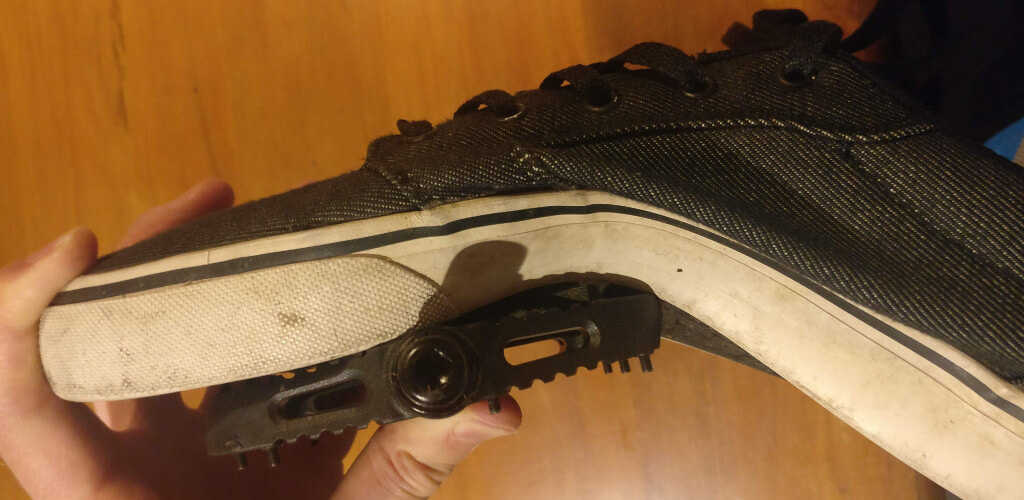If riding flat pedals, the best choice is to wear flat soled shoes designed for mountain biking. These have very stiff soles, and a tacky rubber sole which allows the metal pins in the pedals to bite in, providing incredible levels of grip even through very rough terrain.
If Clipless pedals are what you’re riding, you’ll require biking shoes with cleats that are designed to click into the pedal mechanism, attaching your shoe to the pedal until released.
For someone new to riding, most often riders will be running some type of flat pedals, and will just be trying to decide which of their existing shoes would be best suited for this sport.
This is definitely not ideal, as it can lead to several issues when riding challenging mountain bike trails – but we’ll get to that in a moment.
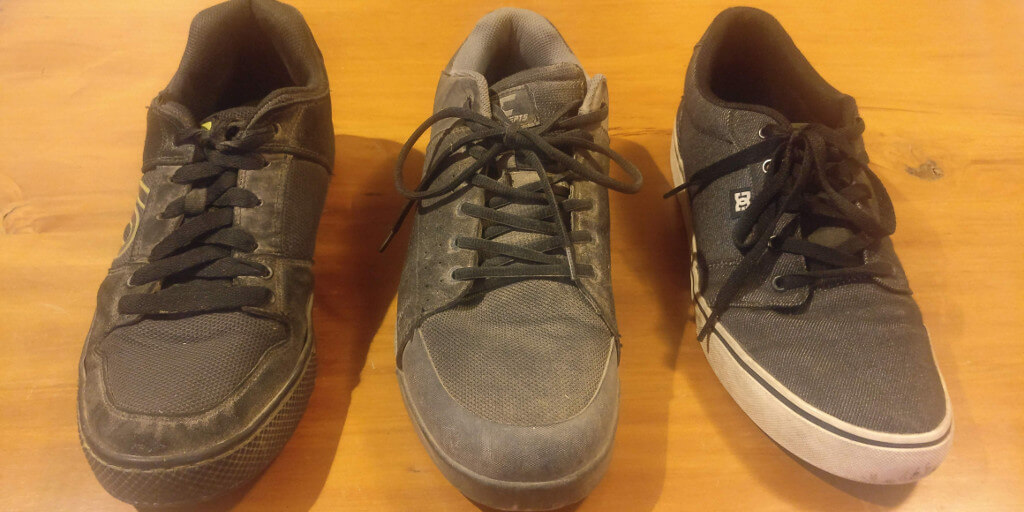
So why does mountain biking require shoes?
It’s a reasonable question! You might think that a pair of skate shoes, or even running shoes or other sneakers would do just fine – after all, it is the tires on the bike that are rolling down the trail – it’s not like we’re running down the trail…
But there are some issues with that.
Firstly, there are different forces at play here.
Think about when you’re standing on the pedals, up off the seat, descending some gnarly downhill trail – with your weight, and the chunky terrain and obstacles moving the bikes around in several directions, your shoes are going to want to fold over the pedal.
If you’re just riding down a quick 5 minute trail that’s perfectly fine.
But if you’re planning on mountain biking for a couple of hours, that’s another thing all together! Your feet will be wrecked after solid riding session.
Just to add to this, if you were to try using your running shoes with special cutout sole designed specifically for running, this will mean that the sole won’t mesh at all nicely with the wide square of metal grip pins.
Less grip between your feet and the bike is a bad thing.
Your pedals for your feet and your grips for your hands are the two most important contact points on the bike when it comes to handling technical terrain, fast descending and many other potentially dangerous adventures on a mountain bike!
Having your foot (or potentially both!) instantly lose it’s connection with your pedal during some intense moment on the trail is more often than not going to result in a bad time.
Someone new to mountain biking might not have experienced it yet, but when you’re zooming down a trail, over all sorts of different terrain, roots, rocks and so on, your feet are going to be chattering around on those pedals with all that vibration and movement – which is one of the main reasons you’re wanting the connection between shoe sole and pedal to be so tacky and dependable.
Different pedals need different shoes
As mentioned previously when you’re mountain biking you’re basically going to be either using flat pedals with metal pins in them for gripping into flat soled MTB shoes – or “clipless” pedals, which ironically involve in clipping into the pedals, basically attaching your shoes to the bike.
What we’re going to look at today is what shoes we can use with our flat pedals.
So what are the best Vans shoes for mountain biking?
Skate shoes, or other sneakers, despite being flat soled, are not particularly well suited to riding mountain bikes.
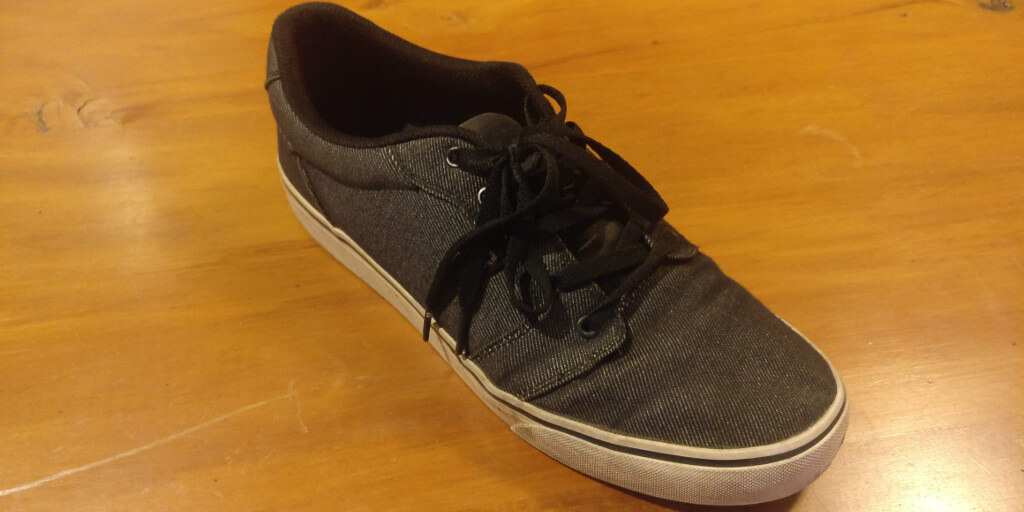
They’re certainly preferable to running shoes or most other casual/work footwear, but they just don’t have a sturdy enough sole to stop your foot from wrapping around the pedal during rough terrain, landing jumps or drops, or even doing lots of uphill trail climbing.
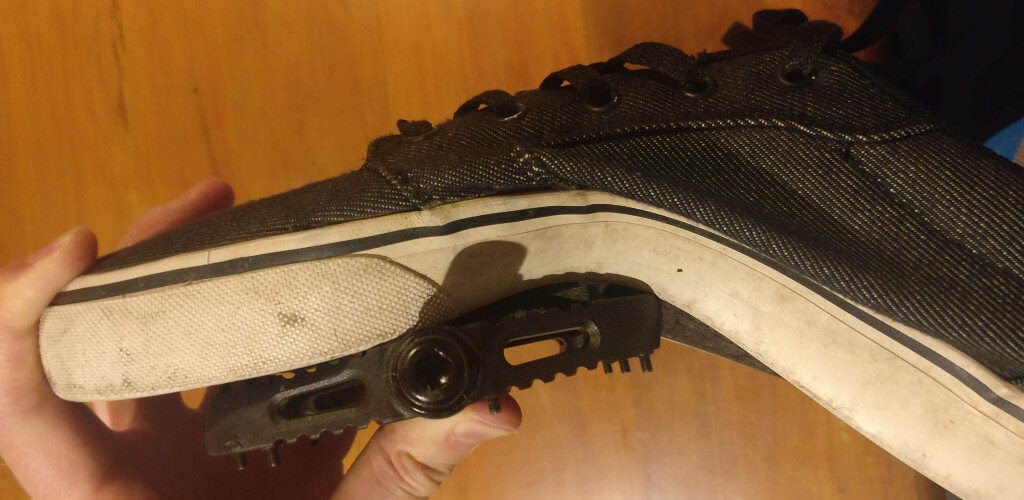
A big difference is also immediately noticeable in the tackiness of the rubber sole.
The rubber on the sole of mountain biking shoes is perfectly suited to allowing the pedals pins to sink in and stay in one place, until the foot is lifted off.
Another factor to think about is the level of protection a shoe provides your foot.
It might be okay while slowly riding around a local park, but think about when you’re flying down a trail weaving between rocks and trees.
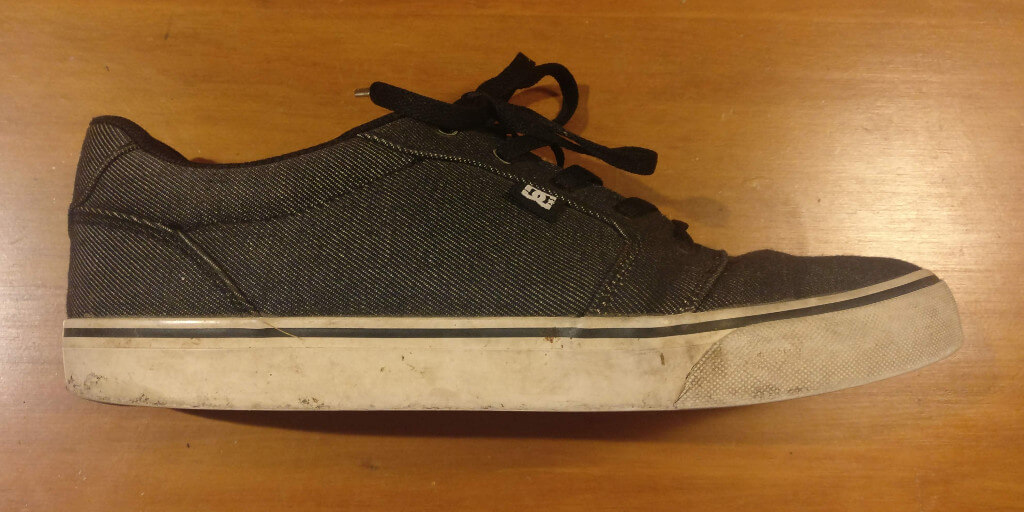
Sooner or later you are going to kick a rock, or a tree – and that is when you find out how much your shoe protects your toes and feet (and the dozens of bones within them).
Okay, so what are the best mountain biking shoes then?
Long dominated by a single brand, Five Ten, these days there are finally several different shoe brands that are widely available which are designed for MTB – and which riders flock to.
Five Tens
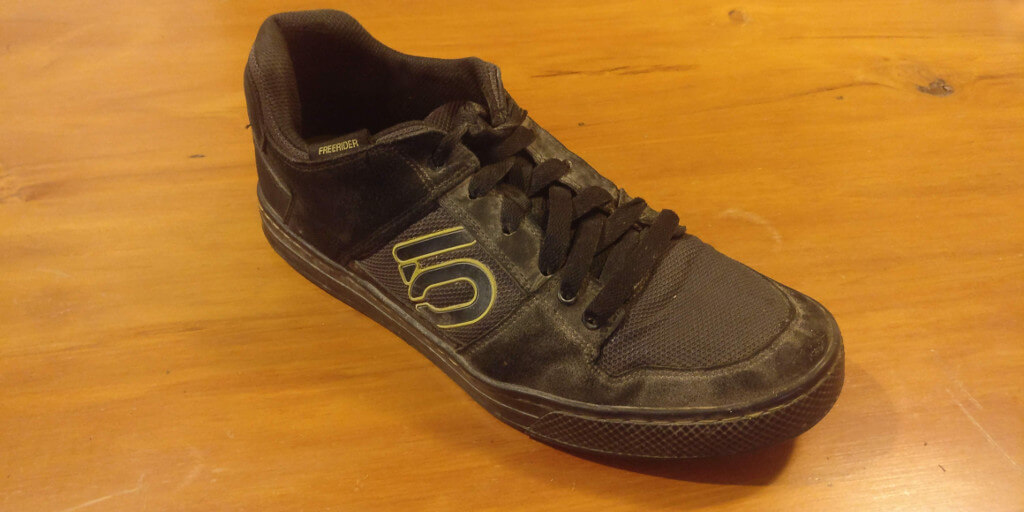
The original – and some would argue still the best. Most avid mountain bikers (particularly those riding flat pedals) you’ll talk to will have worn out several pairs of these over the years.
They actually come in several different versions, from the cheaper Freeriders (lower priced, more flexible), to the Freeriders Pro’s (mid-priced, more solid build), through to the Impact’s (which have the tackiest – yet fastest wearing – sole, and the most solid construction of all).
I wore through my Five Ten Impacts tacky soles quite quickly, and decided to switch to the cheaper Freeriders for my next pair.
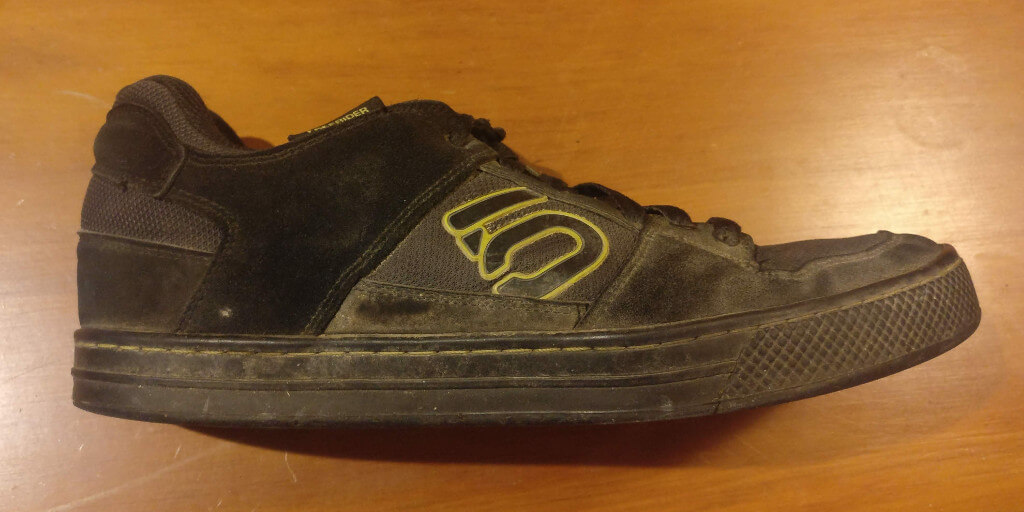
The Freeriders feel noticeably more flexible on the pedals, but overall are still more supportive, protective, and stiffer than skate shoes – and crucially they have the awesome tacky rubber soles (though they are not quite as tacky as the Impacts soles).
I wore mine for several seasons, and commuting to work, which resulted in huge carved holes in the soles from the sharp metal pins.
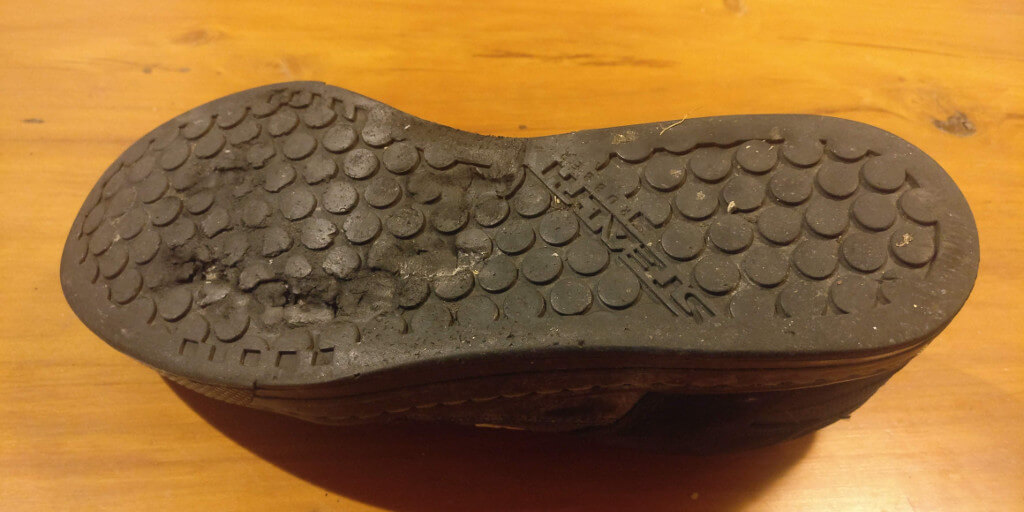
There are now actually skate shoe styled variations coming through as well after many years, built around the Etnies brand. These are particularly popular with riders of street and dirtjumps.
Ride Concepts
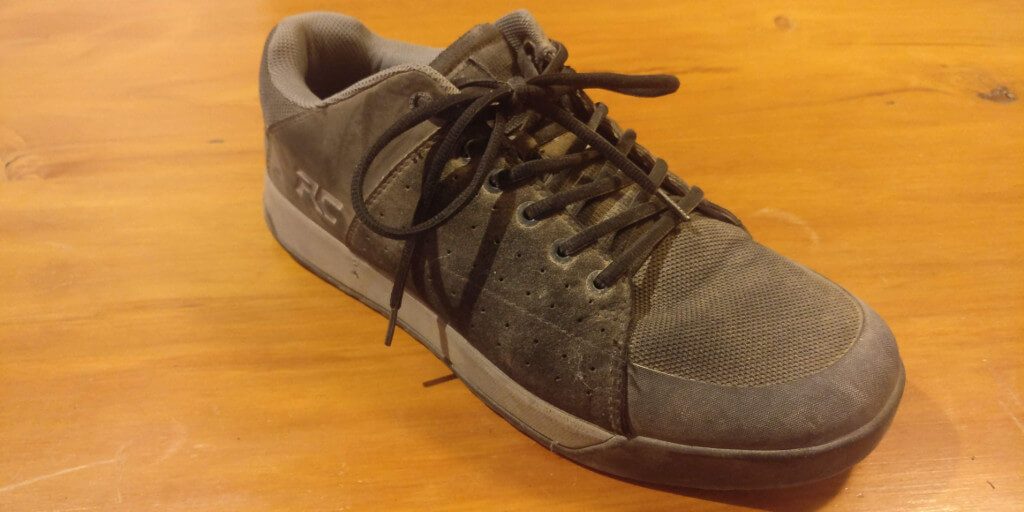
A very popular newer brand to enter the world of mountain bike footwear is RC.
Similar to Five Ten, Ride Concepts have a range of different models from more affordable through to premium models.
I’ve actually switched to a pair of RCs after my last pair of Five Ten Freeriders wore through their soles from the savage pins of my pedals.
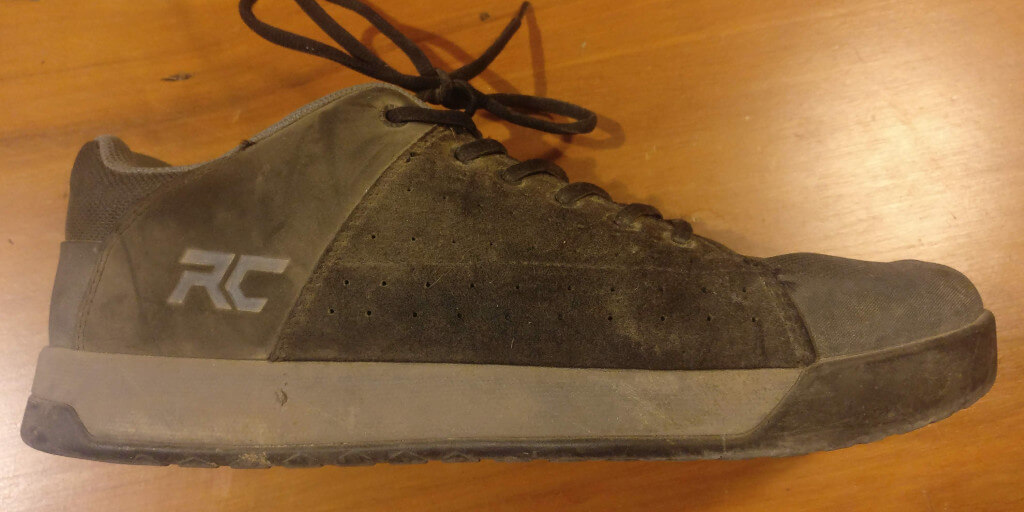
They certainly have a stiffer sole than the Freeriders – and also have a layer of D30 material in their sole as well, which is the same stuff in knee pads, which is soft until an impact which makes it harden into a protective layer.
I haven’t noticed any real difference from the D30 personally.
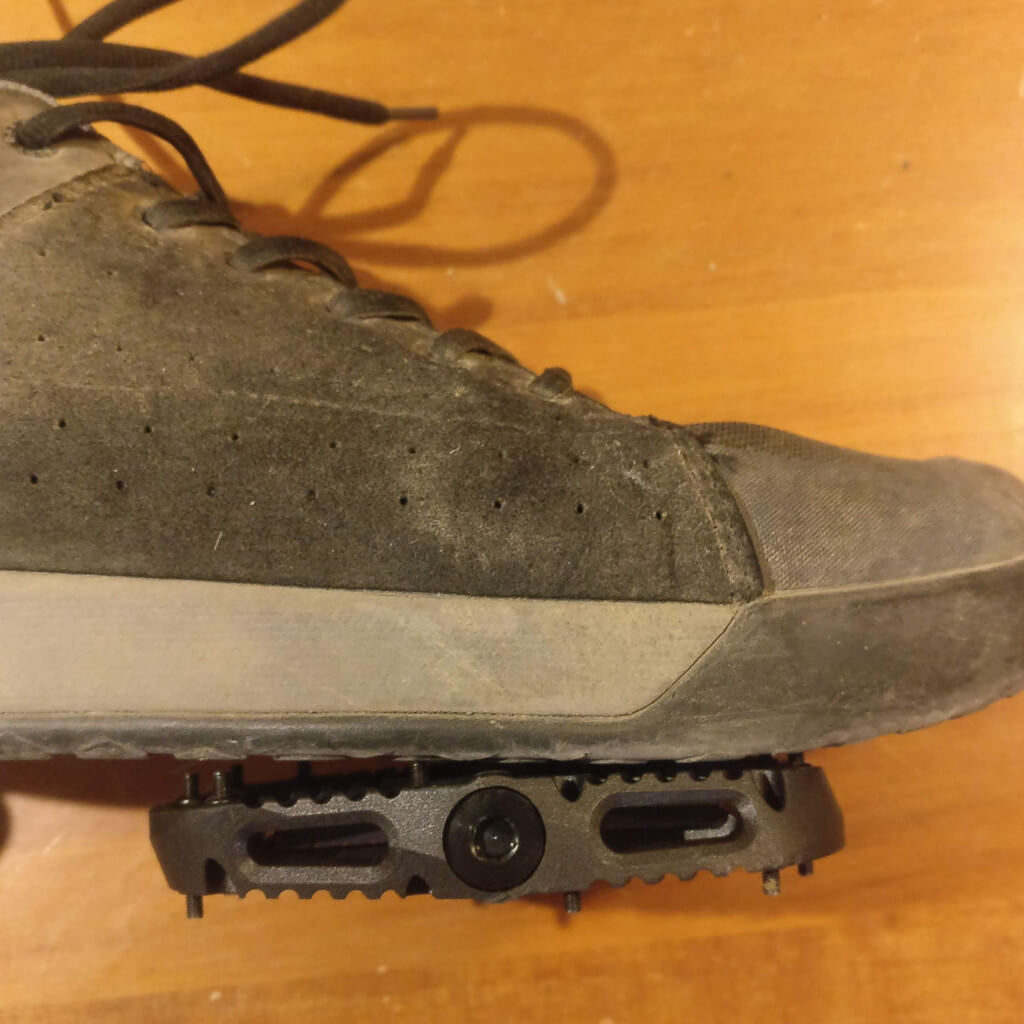
One thing which has been noticeable is the the worn out pins on the battered old Saint pedals I’ve been running don’t grip quite as nicely into the stiffer sole of the Ride Concepts shoe, as they did the Freeriders (which did tend to flex slightly around the pedal body).
This is mainly a shortcoming of the Saint pedals – and the RC’s feel much better on my recently upgraded OneUp pedals – the grip is crazily good.
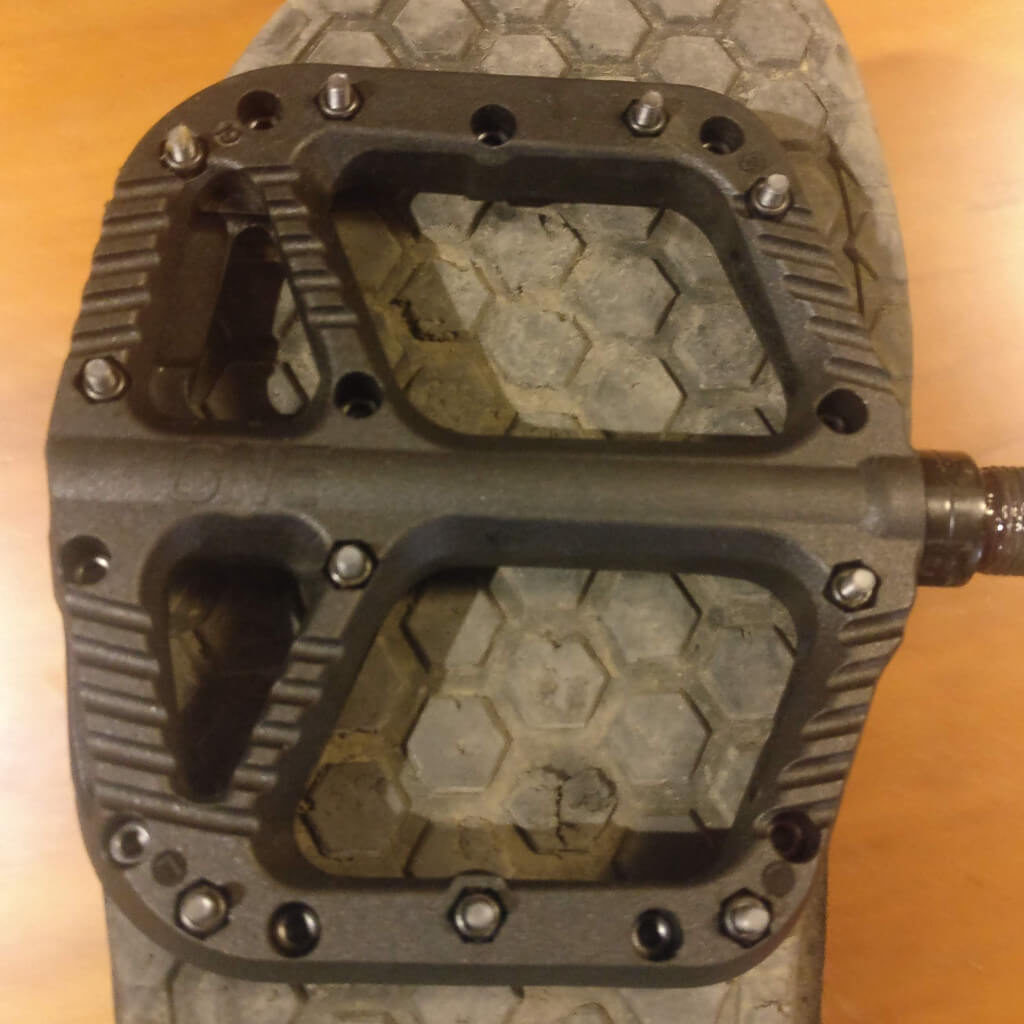
Shimano, Giro, Leatt and others…
My experience of MTB shoes ends with Five Tens and Ride Concepts – but there have been several other brands doing some good stuff for flat pedal riders these days too.
Shimano have a couple of solid shoe choices, as does Giro – while others like Leatt have branched out into footwear more recently.
I think as long as you’re covering the most important features such as a stiff flat shoe, and tacky grippy sole, with some decent protection (especially for your toes), you’re going to be in a better situation than riding with any old pair of sneakers.

